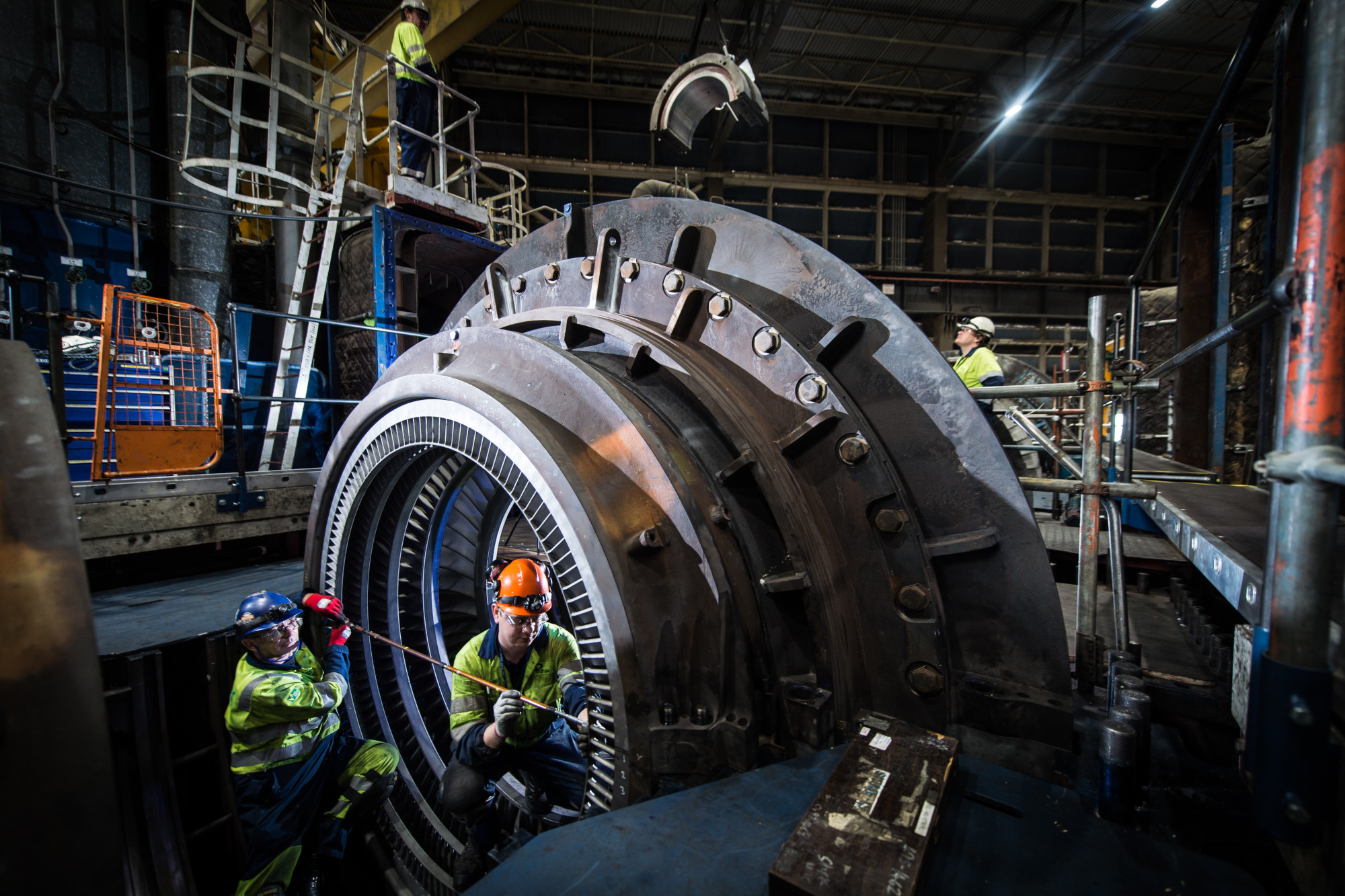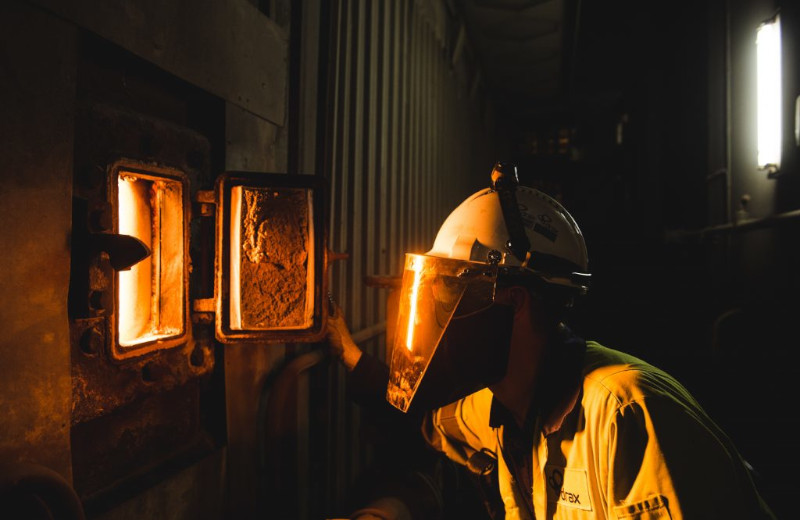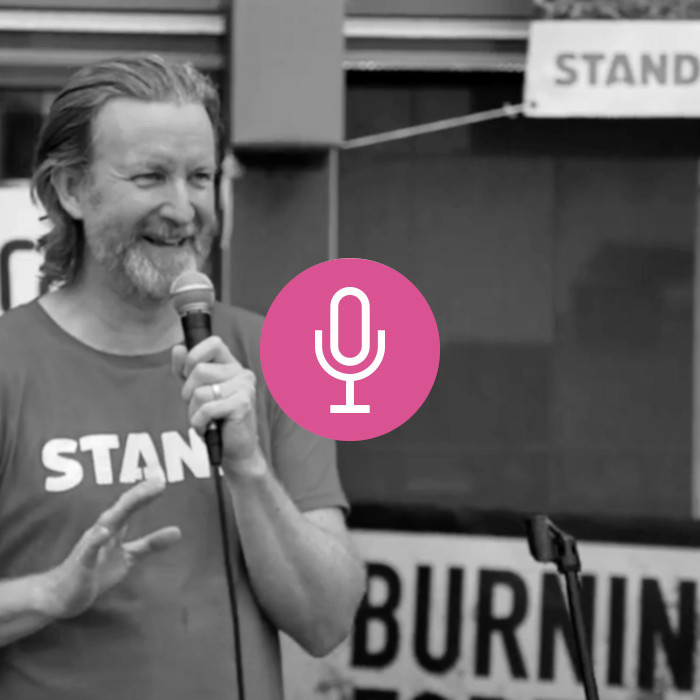Table of Contents
What is BECCS for power?
BECCS is the sum of two existing technologies combined in an attempt to remove carbon from the atmosphere and store it underground, as well as generating ‘zero carbon’ heat and power, according to its advocates.
These technologies are bioenergy, and carbon capture and storage (CCS). Both are broad categories that can involve different types of process and facility. BECCS is often put forward in climate models as a potential solution for tackling so called “hard to abate” residual emissions which more conventional decarbonisation may not be able to remove.
Bioenergy is the use of biomass (organic matter such as wood, plants, or agricultural waste) as fuel to generate energy. This can take different forms and functions, but when used for power generation, involves burning biomass in power stations to produce electricity [1]. The dominant feedstock for these facilities is wood pellets, which is a source of controversy.[2]
Biomass is renewable in the sense that plants can be regrown, unlike fossil fuels, which are millions of years old. But burning biomass often releases more CO2 than coal or natural gas stations.[3]
CCS describes any technology that separates carbon dioxide from other gases (in the air, or in the flue from a smokestack) and then stores it permanently – normally in reservoirs underground.
BECCS proposes to capture and store most of the emissions from burning biomass, leading to ‘negative emissions’ as new crops or trees grow.
Why is BECCS considered a Negative Emissions Technology (NET)?
A negative emissions technology (NET) removes more carbon dioxide from the atmosphere than it emits.
Most forms of CCS are not NETs, because they only capture a proportion of emissions from fossil fuel power plants or industrial processes. Target capture rates are normally between 90 and 95%, though this has rarely been met in past projects, many of which have emitted more CO2 than they removed.[4] Carbon accounting is increasingly contested when supply chain emissions and other factors are included,[5] and the higher the capture rate, the less surplus power is available, meaning that BECCS is unlikely to provide much electricity[6].
Unlike fossil fuel CCS or industrial CCS, BECCS is considered a NET because bioenergy is classed as carbon-neutral in the energy sector. This means that even if a BECCS plant is only capturing a small proportion of its emissions, the overall impact is assumed to remove, not emit, CO2 to the atmosphere.
Under UNFCCC rules, bioenergy is categorised as carbon neutral in the energy sector to avoid double counting of emissions. This guidance dictates that biomass emissions should be accounted at the point of harvest in the land, land use change and forestry (LULUCF) sector, rather than the energy sector. The IPCC explicitly warns against representing biomass energy as in fact producing zero emissions: “the approach of not including these [bioenergy] emissions in the Energy Sector total should not be interpreted as a conclusion about the sustainability or carbon neutrality of bioenergy.”[7] In reality, biomass emissions in the LULUCF sector are often not accounted for at all or only partially, depending on the land use accounting regime that countries choose to adopt.[8] Many experts have suggested that this loophole has been one of the major incentives to burn biomass for energy, as it means that there is no official record in carbon accounts of the emissions released.[9]
Proponents of power bioenergy argue that even when these biomass smokestack emissions are fully accounted for, carbon neutrality can be achieved when an equal amount of carbon is sequestered by replanting new trees or crops. However, scientists have highlighted that the decades taken for new trees to sequester equivalent carbon to that released generates a ‘carbon debt’ of CO2 in the atmosphere that will not be repaid in time to meet the Paris Agreement, or even to prevent irreversible climatic ‘tipping points’.[10,11]
How is BECCS used in climate change policy and modelling?
BECCS has become increasingly prominent in mitigation pathways[12] and net zero strategies, usually used to offset sectors that are seen as hard to decarbonise – such as agriculture, shipping, air travel, and industrial production such as cement, steel, and chemical manufacturing. The ‘hard to abate’ emissions from such sectors can create tricky gaps in the carbon accounting for policy modellers, and BECCS offers a seemingly simple solution or a “filler” for those gaps.
In the Intergovernmental Panel on Climate Change’s 2022 report on climate mitigation, most pathways included BECCS, ranging from 30GtCO2 captured by 2100, to 780GtCO2. Though this is considerably less than its previous report in 2018, the scale is still enormous: for context, global emissions in 2020 were 34.8 GtCO2.
The International Energy Agency is less ambitious with BECCS, citing expected limitations on the availability of sustainable biomass in its 2020 Special Report on CCUS. Their Sustainable Development Scenario has BECCS capturing and storing around 45 GtCO2 by 2070.
According to a 2021 paper published in Frontiers in Climate[13], 25 countries have national strategies for carbon dioxide removal. The majority of these do not include BECCS, preferring to focus on using soil and forests. Only 10 include BECCS: Canada, Denmark, Finland, France, Japan, The Netherlands, Norway, Sweden, The UK, and The USA.
Is BECCS already in operation? How many facilities are there?
According to data from Oxford University’s CO2 Removal Hub[14], in September 2021 there were two small-scale, but operational BECCS for power projects in the world. One is Drax’s woodburning pilot in the UK, only capturing one tonne of CO2 a day, which is not stored. The other is Toshiba’s demonstration project in Japan, which burns pine kernel shells.
There are four commercial BECCS for power projects around the world in development stages, none of which are operational. The largest, by far, is an expansion of Drax’s UK pilot, which will aim to capture 4.3 MtCO2 per year. If Drax receives further public subsidy in 2024, they plan to begin operating their first BECCS unit in 2027, with two units fully running by 2030.
Whether Drax should receive this subsidy is a point of debate in UK politics. Letters have been written to the Energy Minister raising concerns about BECCS both from the Environmental Audit Committee and from groups of MPs. The Head of Carbon Budgets at the Climate Change Committee has warned that it is “very difficult” to make Drax’s current supply chain sustainable, saying that imported biomass “is not something that the UK should be relying on at large scale”.
What are the markets for carbon removals that are being proposed?
There are two types of carbon market operating today: the voluntary carbon market, and governmental emissions trading systems.
Currently, the EU and UK ETSs do not include BECCS removals. In the EU ETS, a pollutant power station installing CCS can reduce its compliance obligations, but seeing as power bioenergy is classed as carbon-neutral anyway, this is not needed.
‘Removal units’ can be traded in the ETSs of California, Korea, New Zealand, and some Chinese pilot ETSs[15] – but these largely apply to forestry and soil sequestration, and are not yet trading tech removals like direct air capture or BECCS. Discussions are happening within the EU to introduce a mechanism to include tech removals in the ETS, but this is unlikely to happen for many years.[16]
Very little BECCS for power is operational yet, so there is not much to trade, regardless. But the voluntary carbon market, which is ahead of most ETSs in trading removals, now trades “future vintages” – offset credits for projects that are yet to happen.[17] This could see a rise in BECCS offsets in the near future.
At the moment, there is no known seller of BECCS for power offsets.
What are the challenges of using BECCS?
- Emissions: burning wood for electricity emits more carbon dioxide per unit energy than using coal.[18] The UK’s Drax bioenergy plant is the UK’s largest single source of emissions, or the fourth largest in Europe.[19] Currently, emissions from burning biomass are not reflected in UK BECCS lifecycle assessments. This means that uncaptured emissions entering the atmosphere from the BECCS smokestack (anywhere between 10% and 100% of emissions, in the context of CCS’s history of underdelivery[20]) are not included in estimates of net negativity.
- Forgone sequestration in the forest: Forgone sequestration is the lost opportunity for harvested trees to continue to sequester large amounts of carbon, as a result of replacing older trees with saplings after harvest. The forest’s overall carbon storage and sequestration capacity is lower for decades compared to a scenario where the trees are left standing.[21,22]
- Soil carbon loss: Carbon released from the soil during biomass harvest in forests.[23]
These sources cannot be captured by CCS technology. A new report by the Natural Resources Defence Council concludes that due to these factors, BECCS based on current supply chains would increase CO2 in the atmosphere for several decades.[24]
- Land-use: to meet BECCS-reliant IPCC pathways, there will be enormous spatial requirements for growing trees or biocrops. The largest projections require land two and a half times the size of India for this.[25] Converting this much space for biocrops is ambitious in a short time frame, could globally harm food security and raise food prices significantly, cause mass-displacement of peoples, undermine ecosystems, and increase water demand.[26] With modelling suggesting this land will largely be in the Global South, climate justice campaigners warn that corporate control of this land will constitute a form of neo-colonialism, and that climate policymakers have underestimated the politics of such a plan.[27]
- Cost: without operational BECCS power plants yet running, we do not reliably know its financial cost. But estimates from Ember suggest the UK’s Drax plant will need more than £30 billion in subsidies, on top of its own commercial profits, to run the plant.[28] The calculation was supported by a UK government publication giving a similar cost for BECCS (CFD plus negative emissions payment) in October 2021, pricing Drax’s energy from BECCS at £179mw/h.[29] This is for a project that is aiming to capture eight million tonnes of CO2 a year: more than six times this amount is required in the UK alone to meet the country’s Balanced Pathway Scenario by 2050.
- Energy penalty: the carbon capture process requires a lot of energy, so the higher the capture rate of a BECCS facility, the less energy is left over for power generation. Chatham House estimated that a 90% capture rate would only result in a 76% carbon efficiency once supply chain emissions were included.[30]
- Deforestation and biodiversity: it’s widely recognised that sustainable biomass should be sourced from waste materials, or certain types of low-impact energy crops on marginal land. Yet bioenergy facilities have driven a huge increase in the use of wood pellets that are driving forest degradation around the world. As two examples, pellet demand in the USA has increased by millions of tonnes in the 21st Century[31], and logging volumes in Estonia have almost tripled, so much that Estonia’s habitats are expected to become a net source of carbon by 2034[32]. Wood sourced using damaging logging practices, including clear-felling of mature and highly biodiverse hardwood forests, routinely enters the UK energy market.[33,34] For example, in some European countries that supply Drax, forest harvesting is permitted in Natura 2000 sites (which should be protected under European Law for their high nature value) and other important areas in Europe for habitats and species.[35] The recent IPCC-IPBES Workshop on Biodiversity and Climate Change stated that “intensive bioenergy crop production can negatively affect biodiversity and ecosystem services, including in adjacent land, freshwater and marine ecosystems… also impacting on human capacity to adapt to climate change.”[36] Wood certifiers such as FSC, PEFC and SBP have a history of failing to vet illegally and unsustainably sourced biomass before certifying it for European markets.[37]
- Scale: Due to the UK’s prominence on the global stage as Europe’s largest consumer of biomass with seminal plans to embed BECCS in the country’s net zero plan, the UK model is likely to be exported around the world. UK access to global biomass sources will decrease by 2050 as countries establish their own biomass plants.[38] Collecting and transporting bioenergy feedstocks and/or the captured carbon dioxide on the scale envisioned by IPCC modelling could entail energy use equivalent to up to half of current total global primary energy consumption.[39]
- Blocking alternatives: There are concerns from academics that relying on uncertain climate mitigation methods like BECCS is wasting time, money and resources that we should be spending on other planning and preparation. One 2020 study found that rather than reducing global heating, complacency from reliance on negative emissions technology could act as a ‘mitigation deterrent’, causing an extra 1.4C of warming.[40]
What alternatives are there for negative emissions?
- Direct Air Carbon Capture and Storage (DACCS): instead of separating and storing carbon dioxide from flue gases, DACCS filters CO2 from ambient air. From a climate perspective, DACCS has advantages over BECCS: it does not encourage deforestation, it can be operated without emissions, and it does not require a supply chain of heavy feedstock to be transported (often from abroad). It is currently more expensive than BECCS though, does not produce energy, and the facilities will need to be built from scratch, whereas BECCS plants are usually retrofits.
- Wood in construction: similarly to BECCS, this attempts to give permanence to trees’ natural carbon sequestration. Instead of burning the trees and capturing the emissions, the wood is used in buildings, storing the CO2.
- Biochar: biomass is partially burned, to create a charcoal-like substance that stores carbon, but does not decompose as easily as crops and trees do naturally.
- Enhanced weathering: this involves using powdered silicate or carbonate rock to increase ocean alkalinity, and sequester more CO2 ‘naturally’. It is still largely theoretical and there are various expert concerns about its environmental impact[41]
- Nature based solutions (NBS): this includes afforestation and reforestation, restoring coastal habitats like coastal landscapes and peatlands, and various other approaches that let natural environments do the work for us. NBS have enormous potential: peatlands and wetlands already store up to 77% of the world’s terrestrial biological carbon, and the burning and draining of peatlands accounts for 10% of the planet’s annual fossil fuel emissions. Research has shown that natural forests have a far higher carbon sequestration potential than plantations or replanted trees: the benefits of wood lost for bioenergy cannot be easily reclaimed.[42] NBS are doable now without years of technological development, but many experts are sceptical that NBS can take us to net zero without new technologies.
- Demand reduction: Calculations around residual emissions and the resulting need for NETs are usually based on current markets and behavioural trends. Most alternative policy models that do not use BECCS require significant changes to lifestyles and economies in the world’s richest countries, to reduce emissions from unnecessary energy consumption.
What did the latest IPCC report say about BECCS?
In the IPCC Working Group Three’s 2022 report on mitigation pathways, BECCS is still by far the most favoured option for carbon dioxide removal. Pathways to limit warning to 1.5°C with no or limited temperature overshoot require cropland for biomass spanning 56 to 482 million hectares. For context, India is 329 million hectares.
Despite this, the IPCC repeatedly states that pathways with large-scale biocrops “can have adverse socio-economic and environmental impacts, including on biodiversity, food and water security, local livelihoods and on the rights of Indigenous Peoples, especially if implemented at large scales and where land tenure is insecure,” and that “large-scale bioenergy deployment could increase risks of desertification, land degradation, food insecurity, and higher water withdrawal”.
A recurring point in the report is that although negative emissions are needed, which for the IPCC usually means a mixture of BECCS and planting new forests, it is clear that the more BECCS there is, the harder it becomes to meet sustainable development goals (SDGs). The pathways with the most sustainable development are the ones with the least amount of BECCS, and the most significant downsizing of economies and demand reduction. In other words, we need to make and buy less stuff, and use less energy.
The report also acknowledged the uncertainty around BECCS; the lack of understanding around lifecycle emissions, whether it is viable without ecological and social harm, and whether it even produces negative emissions at all. BECCS “may not prove as effective as expected”, and its “long-term role in low-carbon energy systems is uncertain.” Despite the urgency with which BECCS projects need to be developed to meet the new pathways, the report states that BECCS “may not be a viable carbon removal strategy in the next 10-20 years.”
The report also acknowledges the ways in which IPCC integrated assessment models inherently favour BECCS over nature-based solutions and other methods of carbon removal. This includes models preferring supply-side than demand-side measures, ignoring the impact of carbon payback periods for biomass, and favouring large-scale solutions that allow slow fossil phaseout.
Where can I find more detailed information about bioenergy and BECCS?
- For longer, in-depth discussion and analysis of BECCS and bioenergy you can read the articles ourBioenergy Explained collection. There are podcasts with BECCS experts there too, and a list of key studies on forest biomass.
- 2021 research commissioned by NRDC used an ‘emissions simulator’ to demonstrate that BECCS for power, based on current supply chains, would not produce negative emissions. NRDC found that instead, BECCS for power would produce 80% of the emissions of a coal-fired power plant.
- Chatham House has published detailed reports analysing specific aspects of the BECCS process, such as supply chain emissions and land use. You can find those and others here.
- Ember is a good resource for the cost and emissions of bioenergy and BECCS. Find their reports here.
- We have published a long read about negative emissions technologies like BECCS and their relationship to climate modelling, as part of our CCS series. You can read that here.
- ‘Forest bioenergy update: BECCS and its role in integrated assessment models‘, European Academies Science Advisory Council, 2022
- ‘Six problems with BECCS‘, Fern, 2022.
Endnotes
- Various projects in North America relating to storing carbon from biomass are sometimes termed BECCS. These include Charm Industrial’s model of injecting bio-oil underground, Summit Carbon Solutions’ model of ethanol production, and some other biorefinery projects. We have chosen not to discuss those here, as power BECCS has more current relevance to climate modelling & governmental climate strategies.
- To get a sense of the public outcry about this, you can browse international media coverage of wood bioenergy in our Bioenergy Explained collection, here.
- ‘Carbon emissions from burning biomass for energy’, Partnership for Policy Integrity, April 2011
- E.g. “Despite hundreds of millions in tax dollars, ADM’s carbon capture program still hasn’t met promised goals” Johnathan Hettinger, Midwest Center for Investigative Reporting November 19, 2020
- Jacobson, M.Z. (2019). ‘The health and climate impacts of carbon capture and direct air capture’, Energy and Environmental Science, 12.
- Quiggin, D. (2021). BECCS deployment: the risks of policies forging ahead of the evidence. Chatham House, Environment and Society Programme.
- IPCC (2021) Frequently Asked Questions. Available at: https://www.ipcc-nggip.iges.or.jp/faq/FAQ.pdf (“IPCC Frequently Asked Questions”). At Q2-10: “According to the IPCC Guidelines CO2 Emissions from the combustion of biomass are reported as zero in the Energy sector. Do the IPCC Guidelines consider biomass used for energy to be carbon neutral?” [C/6/185]
- Brack, D. (2017) The Impacts of the Demand for Woody Biomass for Power and Heat on Climate and Forests. Chatham House.
- Brack, D.,& Birdsey & Walker (2021) ‘Greenhouse gas emissions from burning US-sourced woody biomass in the EU and UK’
- European Academies’ Science Advisory Council, “Commentary by the European Academies’ Science Advisory Council (EASAC) on Forest Bioenergy and Carbon Neutrality,” June 15, 2018, online.
- Brack, D. (2017). Woody biomass for power and heat: Impacts on the global climate. Environment, Energy and Resources Department, The Royal Institute of International Affairs, Chatham House, London.
- Brack, D., & King, R. (2020). ‘Net Zero and Beyond: What Role for Bioenergy with Carbon Capture and Storage?’. Chatham House.
- Buylova, A. et al. (2021). ‘Cancel (Out) Emissions? The Envisaged Role of Carbon Dioxide Removal Technologies in Long-Term National Climate Strategies’, Frontiers in Climate.
- See the database here: https://co2re.co/FacilityData
- There’s still some confusion internationally about the details of China’s ETS – published documents have lacked specificity. Source for the claim about pilots & removal units: Emissions Trading Systems and Net Zero: Trading Removals, International Carbon Action Partnership, May 2021. p.VIII
- This is according to background interviews with experts.
- Purdom, S., and Zou, K. (2022). ‘Giving (carbon) credit where it’s due’. Climate Tech VC.
- RSPB, Friends of the Earth, Greenpeace (2012) Dirtier than coal? Online.
- Harrison, T. (2021). ‘UK biomass emits more CO2 than coal’, Ember.
- Wang, N., et al. (2021). ‘What went wrong? Learning from three decades of carbon capture, utilization and sequestration (CCUS) pilot and demonstration projects’, Energy Policy, 158.
- N. L. Stephenson et al., (2014) “Rate of Tree Carbon Accumulation Increases Continuously With Tree Size,” Nature. Online.
- Mitchell, S.R., Harmon, M.E. and O’Connell, K.E.B. (2012), Carbon debt and carbon sequestration parity in forest bioenergy production. Glob. Change Biol. Bioenergy, 4: 818-827. https://doi.org/10.1111/j.1757-1707.2012.01173.x
- D. L. Achat et al., (2015) “Forest Soil Carbon Is Threatened by Intensive Biomass Harvesting,” Scientific Reports 5, art. 15991 (online); S. P. Hamburg et al., (2019) “Losses of Mineral Soil Carbon Largely Offset Biomass Accumulation 15 Years After Whole-Tree Harvest in a Northern Hardwood Forest,” Biogeochemistry 144, no. 1. Online.
- NRDC (2021) A bad biomass bet: why the leading approach to biomass energy with carbon capture and storage isn’t carbon negative. Online.
- Brack, D., & King, R. (2020). ‘Net Zero and Beyond: What Role for Bioenergy with Carbon Capture and Storage?’. Chatham House.
- Dornburg et al., (2008) Assessment of global biomass potentials and their links to food, water, biodiversity, energy demand and economy, The Netherlands Research Programme on Scientific Assessment and Policy Analysis for Climate Change (WAB).; Muratori et al. (2016). ‘Global economic consequences of deploying bioenergy with carbon capture and storage (BECCS)’, Environ. Res. Lett.; Popp, J. et al. (2014). ‘The effect of bioenergy expansion: Food, energy, and environment’, Renewable and Sustainable Energy Reviews, 32, pp.559-578; Tomei, J. et al. (2016). ‘Food versus fuel? Going beyond biofuels’, Land Use Policy, 56, pp.320-326; Gough, C. et al. (2018). ‘Challenges to the use of BECCS as a keystone technology in pursuit of 1.5⁰C’, Global Sustainability, 1.
- ‘Planet B: Everything Must Change – Land (Ep 2)’ – featuring speakers from Mighty Earth, Friends of the Earth, and other climate justice activists. Novara. October 2021; Fridahl, M. & Lehtveer, M. (2018). ‘Bioenergy with carbon capture and storage (BECCS): Global potential, investment preferences, and deployment barriers’, Energy Research & Social Science, 42, pp.155-165; Finkill, G.D. (2018). The inclusion of Bio-energy with carbon capture and storage (BECCS) in Integrated Assessment Models: Assessing legitimacy within published climate discourses. Uppsala University; Hansson, A., et al. (2019). ‘Preconditions for bioenergy with carbon capture and storage (BECCS) in sub-Saharan Africa: the case of Tanzania’. Environment, Development and Sustainability, 22, pp.6851–6875
- MacDonald, P. (2021). ‘Will bioenergy with carbon capture (BECCS) work?’, Economy, Land & Climate Insight.
- Investable commercial frameworks for Power BECCS, Element Energy and Vivid Economics. June 2021.
- Quiggin, D. (2021). BECCS deployment: the risks of policies forging ahead of the evidence. Chatham House, Environment and Society Programme.
- Dart, T., & Milman, O. (2018). ‘The dirty little secret behind ‘clean energy’ wood pellets’, The Guardian.
- Kuresoo, S. (2021). ‘EU renewable energy policy subsidizes surge in logging of Estonia’s protected areas’. Economy, Land and Climate Insight.
- NRDC, Dogwood Alliance and SELC (2019) “Global Markets for Biomass Energy are Devastating U.S. Forests” https://www.nrdc.org/sites/default/files/global-markets-biomass-energy-06172019.pdf
- Ceccherini, G., Duveiller, G., Grassi, G. et al. (2020) Abrupt increase in harvested forest area over Europe after 2015. Nature 583, 72–77 https://doi.org/10.1038/s41586-020-2438-y
- European Commission (2020) Reviewing and mitigating the impacts of renewable energy developments on habitats and species protected under the Birds and Habitats Directives. Online
- Pörtner, H.O., et al. 2021. IPBES-IPCC co-sponsored workshop report on biodiversity and climate change; IPBES and IPCC. Online.
- The investigative NGO Earthsight have demonstrated this through numerous case studies, including several notable investigations into Russian wood exports. You can find these investigations at www.earthsight.org.uk/investigations, or listen to our podcast with their director Sam Lawson here.
- Ricardo (2020) The potential of bioenergy with carbon capture. Report to BEIS.
- Anderson, K. and Peters, G. (2016), ‘The trouble with negative emissions’, Science, 354(6309), pp. 182–83.
- McLaren, D. (2020). ‘Quantifying the potential scale of mitigation deterrence from greenhouse gas removal techniques’, Climatic Change, 162, pp.2411–2428
- For a brief overview, see Chow, C. (2020). Enhanced Weathering for Carbon Capture. Earth.org
- Lewis, S.L, et al. (2019). ‘Restoring natural forests is the best way to remove atmospheric carbon‘, Nature.
Bertie Harrison-Broninski is an Assistant Editor at Land and Climate Review, and a researcher studying bioenergy and BECCS policy for Culmer Raphael. He is also a freelance investigative journalist, with recent work including Al Jazeera’s Degrees of Abuse series and John Sweeney’s book on Ghislaine Maxwell. Find him on twitter @bertrandhb.
Read more:





